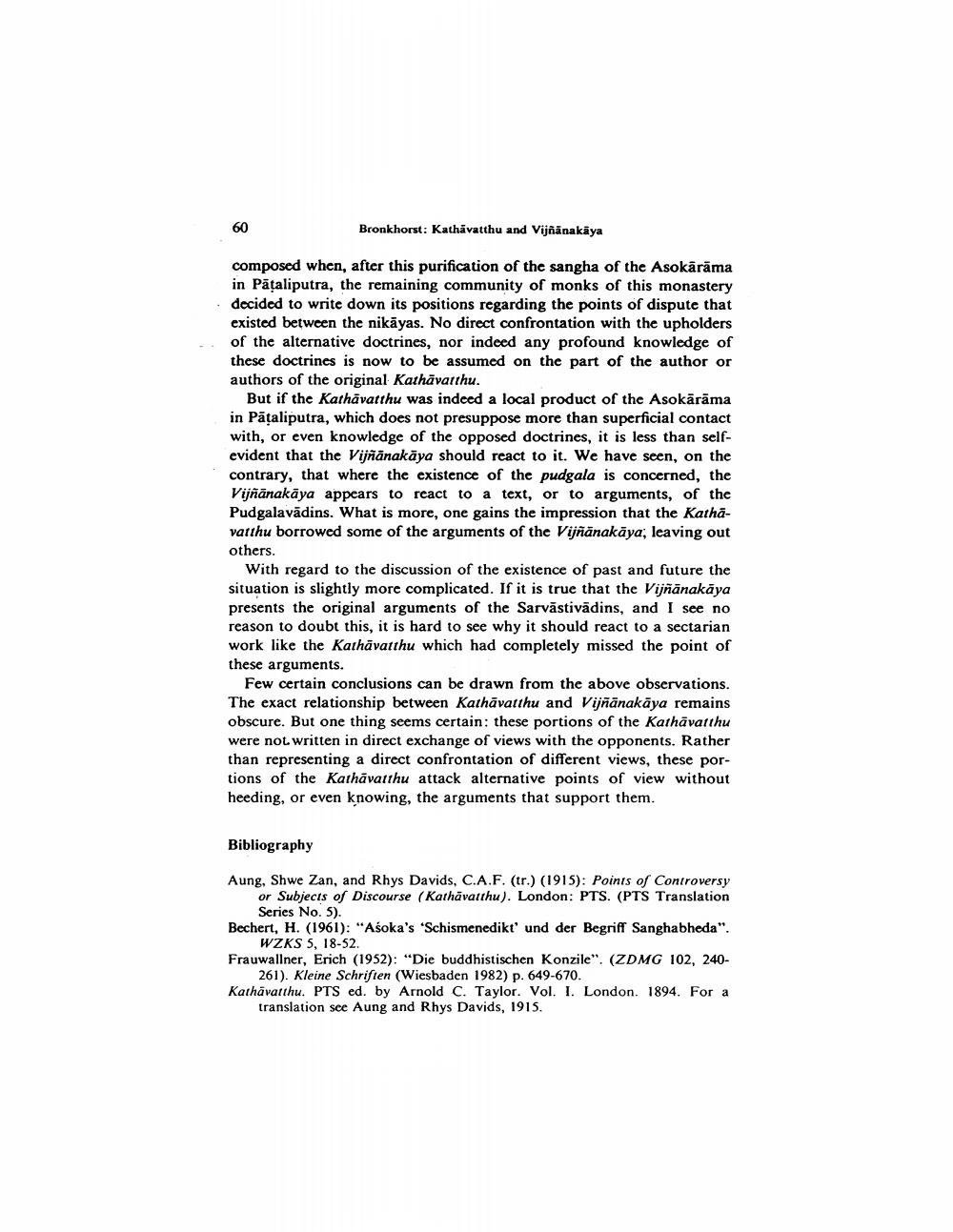________________
Bronkhorst: Kathavatthu and Vijñānakaya
composed when, after this purification of the sangha of the Asokārāma in Pataliputra, the remaining community of monks of this monastery decided to write down its positions regarding the points of dispute that existed between the nikayas. No direct confrontation with the upholders of the alternative doctrines, nor indeed any profound knowledge of these doctrines is now to be assumed on the part of the author or authors of the original Kathāvatthu.
But if the Kathavatthu was indeed a local product of the Asokārāma in Pataliputra, which does not presuppose more than superficial contact with, or even knowledge of the opposed doctrines, it is less than selfevident that the Vijñānakāya should react to it. We have seen, on the contrary, that where the existence of the pudgala is concerned, the Vijñānakāya appears to react to a text, or to arguments, of the Pudgalavadins. What is more, one gains the impression that the Kathavatthu borrowed some of the arguments of the Vijñānakāya, leaving out others.
60
With regard to the discussion of the existence of past and future the situation is slightly more complicated. If it is true that the Vijñānakāya presents the original arguments of the Sarvāstivādins, and I see no reason to doubt this, it is hard to see why it should react to a sectarian work like the Kathavatthu which had completely missed the point of these arguments.
Few certain conclusions can be drawn from the above observations. The exact relationship between Kathāvatthu and Vijñānakāya remains obscure. But one thing seems certain: these portions of the Kathavatthu were not written in direct exchange of views with the opponents. Rather than representing a direct confrontation of different views, these portions of the Kathavatthu attack alternative points of view without heeding, or even knowing, the arguments that support them.
Bibliography
Aung, Shwe Zan, and Rhys Davids, C.A.F. (tr.) (1915): Points of Controversy or Subjects of Discourse (Kathavatthu). London: PTS. (PTS Translation Series No. 5).
Bechert, H. (1961): "Aśoka's 'Schismenedikt' und der Begriff Sanghabheda". WZKS 5, 18-52.
Frauwallner, Erich (1952): "Die buddhistischen Konzile". (ZDMG 102, 240261). Kleine Schriften (Wiesbaden 1982) p. 649-670. Kathāvatthu. PTS ed. by Arnold C. Taylor. Vol. I. London. 1894. For a translation see Aung and Rhys Davids, 1915.




